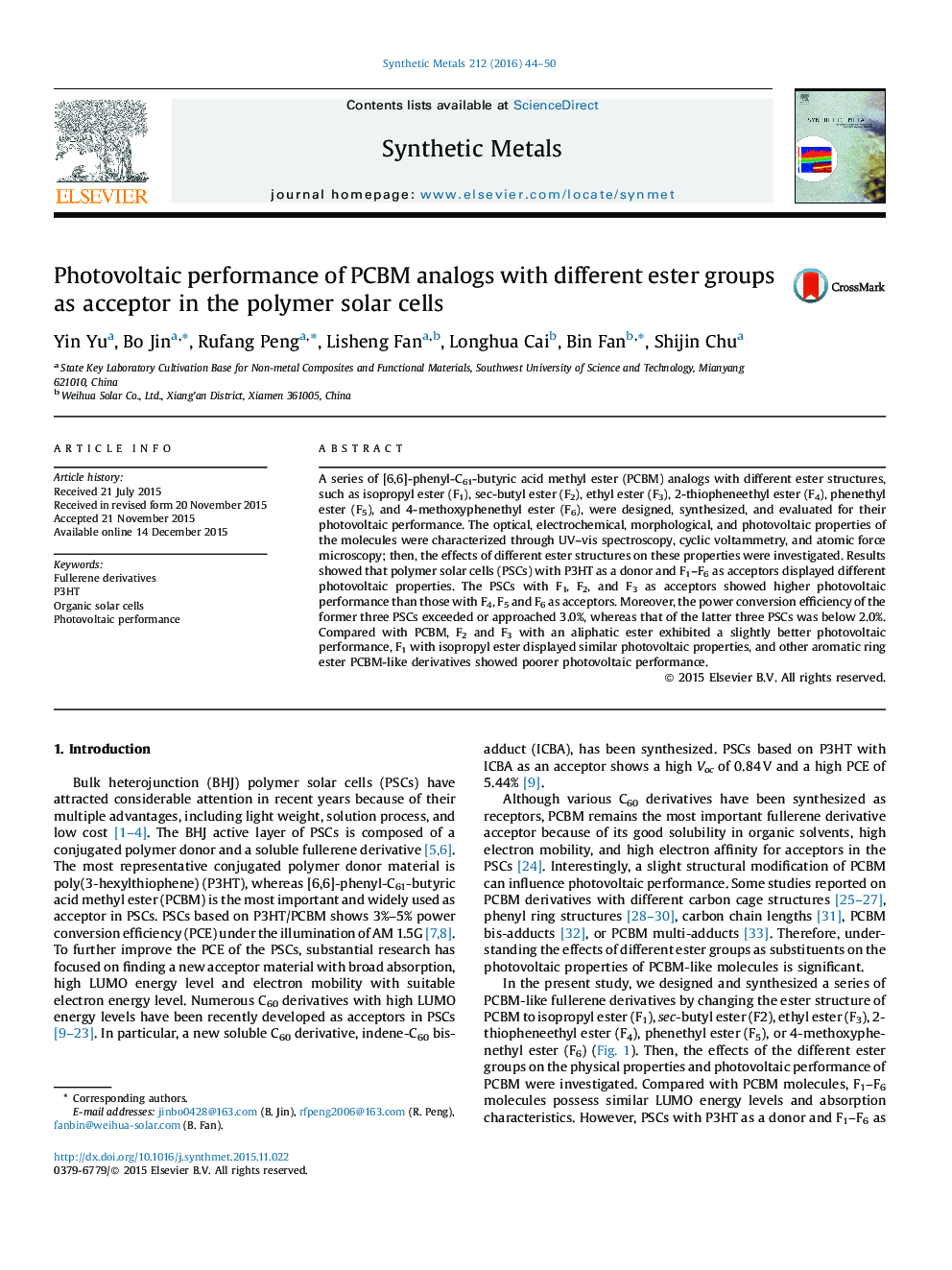| کد مقاله | کد نشریه | سال انتشار | مقاله انگلیسی | نسخه تمام متن |
|---|---|---|---|---|
| 1440286 | 1509365 | 2016 | 7 صفحه PDF | دانلود رایگان |

• A series of PCBM analogs with different ester groups were designed, synthesized.
• The optical and electrochemical properties of the aliphatic ester fullerene derivatives are better than the aromatic ring ester fullerene derivatives.
• The PCE values of the aliphatic ester fullerene derivatives of polymer solar cells (PSCs) with P3HT as donor, are better than aromatic ring ester fullerene derivatives.
A series of [6,6]-phenyl-C61-butyric acid methyl ester (PCBM) analogs with different ester structures, such as isopropyl ester (F1), sec-butyl ester (F2), ethyl ester (F3), 2-thiopheneethyl ester (F4), phenethyl ester (F5), and 4-methoxyphenethyl ester (F6), were designed, synthesized, and evaluated for their photovoltaic performance. The optical, electrochemical, morphological, and photovoltaic properties of the molecules were characterized through UV–vis spectroscopy, cyclic voltammetry, and atomic force microscopy; then, the effects of different ester structures on these properties were investigated. Results showed that polymer solar cells (PSCs) with P3HT as a donor and F1–F6 as acceptors displayed different photovoltaic properties. The PSCs with F1, F2, and F3 as acceptors showed higher photovoltaic performance than those with F4, F5 and F6 as acceptors. Moreover, the power conversion efficiency of the former three PSCs exceeded or approached 3.0%, whereas that of the latter three PSCs was below 2.0%. Compared with PCBM, F2 and F3 with an aliphatic ester exhibited a slightly better photovoltaic performance, F1 with isopropyl ester displayed similar photovoltaic properties, and other aromatic ring ester PCBM-like derivatives showed poorer photovoltaic performance.
Current density–voltage curves of devices with the structure ITO/PEIE/P3HT:PCBM-like/MoO3/Ag with P3HT as donor and PCBM-like as acceptors with weight ratio of 1:1 under the illumination of AM 1.5G, 82 mW/cm2.Figure optionsDownload as PowerPoint slide
Journal: Synthetic Metals - Volume 212, February 2016, Pages 44–50